Fortresses and ancient walls have preserved a city full of charm, towering over the opposite shore of the Adriatic. The colors, flavors, and thousands of suggestions dictated by the narrow streets of the historic center and impressive buildings are amazing in Dubrovnik.
Dubrovnik, a Croatian city with a rich history, is also known for the TV series “Game of Thrones”. Discover the beauty of this place, between myths and fantasies.
Historical center, Dubrovnik
The entrance to the historical center of Dubrovnik has two main gates, one opposite the other, at both ends of the main road that runs through the center, cutting it in half. One of these two doors is the famous Porta Philae, dated 1537, the most beautiful and crowded, a mandatory passage for those who start a tour of the city. Once a wooden drawbridge was closed to unwanted guests for the night. The door was locked with two locks, the keys were given to the Rector of the city, an institution similar to the Doge of Venice. Now that times have changed, the bridge is made of stone and represents the starting point of a walk to the city center.
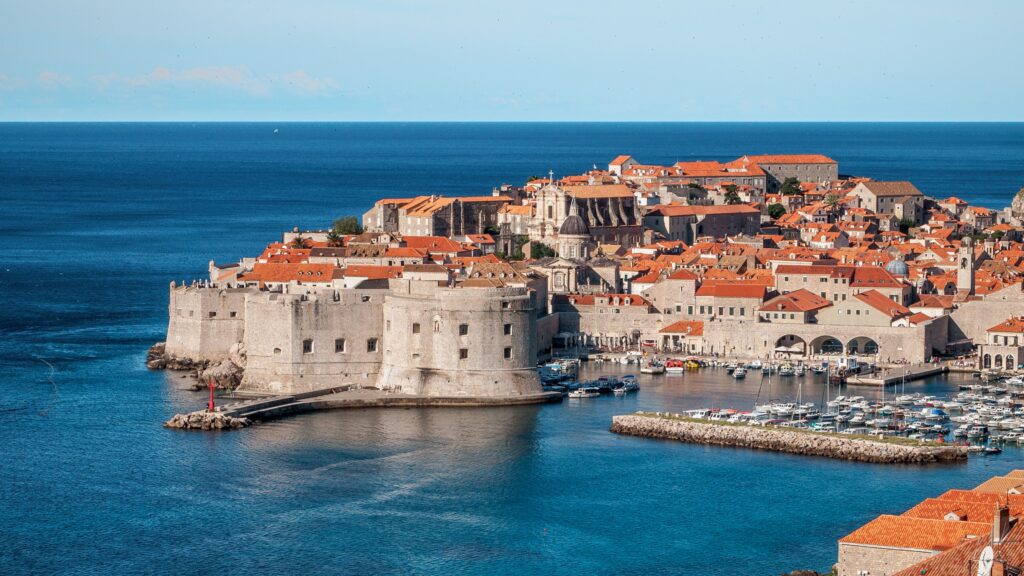
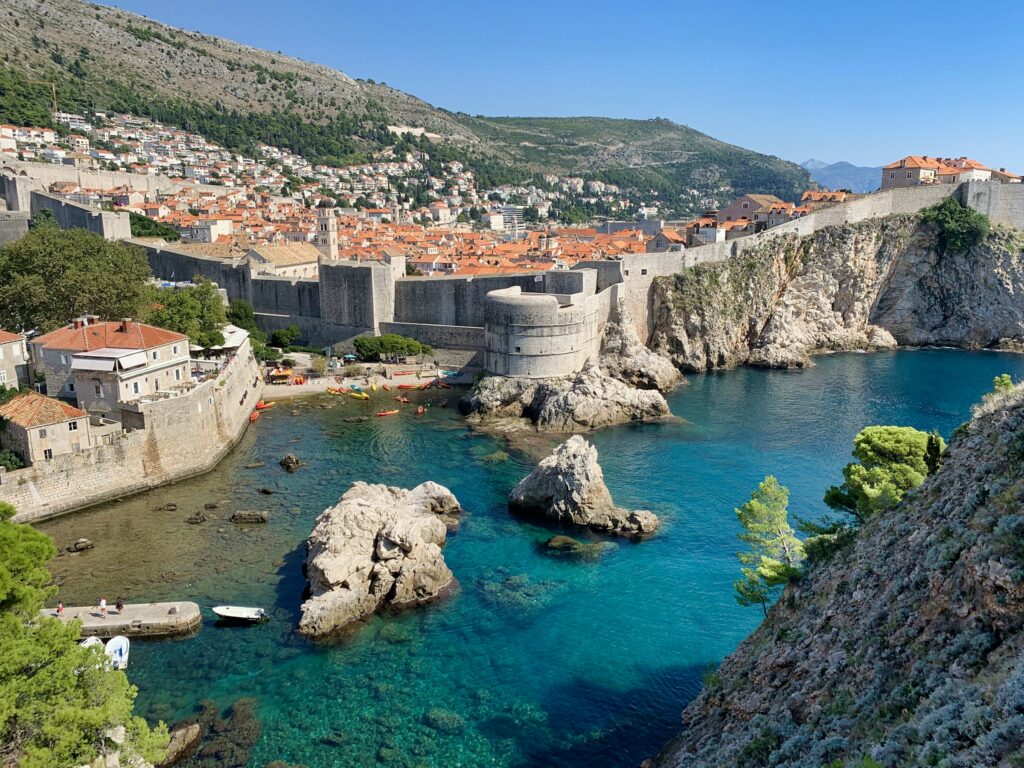
It leads to a staircase, a ramp leading to an inner gate dated 1460. The statue of San Biagio, the patron saint of the city (legend has it that he protected the inhabitants from the great earthquake of 1667), supports the reproduction of Dubrovnik, created by the famous Croatian architect Ivan Mestrovic in 1920. Behind the Renaissance-style exterior door is the embankment between the bastion and the actual walls, where the inner Gothic door opens. From here, the view of Plaka, the main street, which everyone knows as Stradun, immediately catches your eye.
Two memorial plaques in this place perpetuate the attacks of Serbian troops in the period from 1991 to 1992, the last wound that these places had to endure and therefore painstakingly heal. In the more distant past, it was through this gate that Napoleon passed in 1806 to announce the end of the Republic of Ragusa. And that was another turning point. The history of the city passed through this gate.
Mincher Fortress
The ancient walls have always protected Dubrovnik, which was once a city-state, and therefore completely closed and independent within its borders. The walls are 2 kilometers long and in some places reach a height of 25 meters. The moat, obviously, also contributed to the protection of the city, as well as the towers. Minceta is very important. It was built in the form of a quadrangle to protect against the attacks of the Turks.
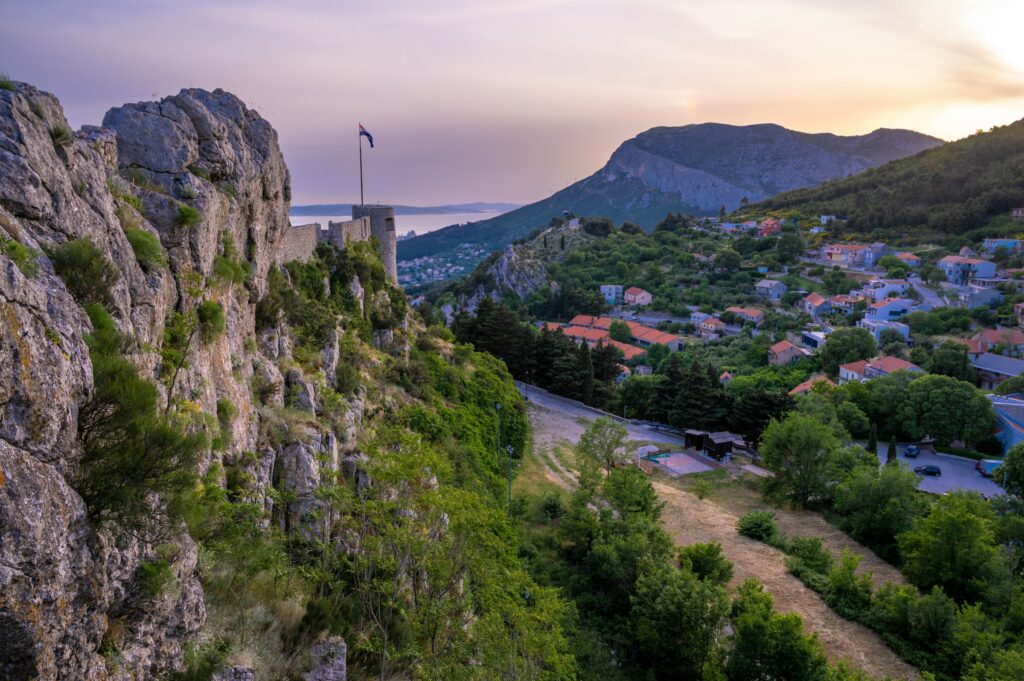
The rounded shape is due to the change in battles and attacks: the last changes occurred in the 15th century. Today there is a museum here, and it is also the best observation deck in the area. You can admire the whole old town with the island of Lokrum, the Lovrienac Fortress, and the intense blue Adriatic Sea in the background.
Fort Bokar, Dubrovnik
Also known as the Zvezdanskaya Fortress, it is a striking example of circular, harmonious, and functional fortified architecture. We are still in the southwestern part of the walls of Dubrovnik, and this fort was conceived by its builders as the most important strategic point to protect the Pila Gate, the main entrance to the west. This defensive point had the same importance as the Mint Tower. A two-story casemate, extending beyond the medieval walls with its entire cylindrical mass, overlooking the sea.
The part develops on a rock separated from the structure, so arched supports were made to fill the existing gap. The sea continues to flow under the fort. The original design is attributed to Michelozzo di Bartolomeo, a Florentine engineer, and construction began in 1461. After the guns were installed at the highest point, the construction remained unfinished for a long time, after disputes about the real need to complete the work. It was only in 1570 that the current situation was reached.
Fort St. John
This corner structure, originally called Giro Della Talpa, was built between 1346 and 1557 mainly to protect the port in a southeasterly direction from pirates or other enemy ships arriving from the sea. The old port was the most vulnerable part of the territory. And for a city based on maritime trade, the protection of the port and access to shipyards was an urgent problem. Hence the importance of Fort St. John and the device associated with the Giro di San Luca and the wide breakwater helped slow down the advance of the enemies by exposing them to artillery fire.
Right from the fortress, right up to the Kase dam, the inhabitants of Ragusa tended the chains that closed the entrance to the port at night. The property is located in the area of the southern wall, directly overlooking the Adriatic Sea.
There are three museums inside:
- Ethnographic
- Marine
- Aquarium
The first tells about the era of the maritime republic, as well as about the era of steam, as well as about the Second World War, and, finally, illustrates the technique of swimming.
Maritime Museum, Dubrovnik
On the ground floor, the history of the navy of the Maritime Republic through the colonization of the Adriatic coast is exhibited. This is the period of maximum expansion. On the second floor, you can admire unusual models that reproduce the last great sailing ships, such as galleons and galleasses, sailing and branched boats that glorified the Ragusa fleet. In another section, steamships of the Austro-Hungarian period are considered.
There are everyday items such as painted wooden boxes supplied to sailors, an onboard pharmacy, and numerous navigation tools. In total, there are more than 4 thousand objects related to the naval history of Dubrovnik and its surroundings. The collection of trade and combat naval flags is also interesting.
Dubrovnik Old Town
The heart of Dubrovnik is here, in the old town. In general, a small area that you can visit in just one day and definitely on foot. Romantic streets reveal mesmerizing glimpses between walls exuding history. To complete the picture, the smell of fragrant herbs in the sunny air, the whiteness of sheets hung to dry between the houses and screams coming from the premises. This is a picture that we walk through in admiration. The entire historical center is surrounded by medieval ramparts.


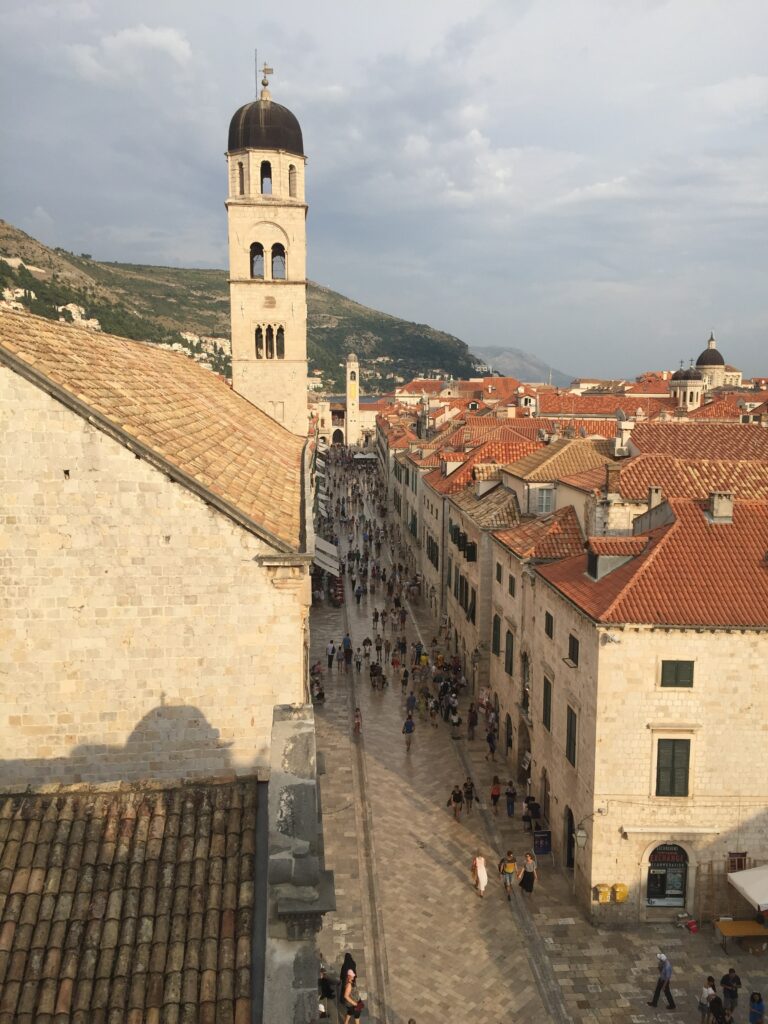

The main access remains the Porta Pile. The gates are protected by the forts of Minceta in the north and Bokar in the south. The tower is a symbol of the city, one of the most beautiful fortified structures in the world. On the other hand, Bokar, which was supposed to protect the city from attacks from the sea, today is often the stage for performances of the Summer Festival in Dubrovnik. Entering the old town, you can immediately admire the Onofrio Fountain, a meeting place for many young people. Then we move on to a harmonious example of Gothic and Renaissance architecture, such as a Franciscan monastery, often a venue for musical concerts.
Between one alley and another, you inevitably end up on the most popular Stradun Street. There are always a lot of people here, at any time of the day or even at night. Following it, you will reach other symbols of the city, starting with the Cathedral of San Biagio, as well as the Palazzo Sponza, the Rector’s Palace, the bell tower, and the Orlando Column: wonderful examples of the late Middle Ages and the Neo-Renaissance. After visiting the most important places, you can get lost in the maze of city streets to discover the beauty of Dubrovnik before dark and even after sunset. The streets are always full of life.
Kolorina Beach
A thought-provoking value-added scenario. It was the background used for some scenes of the TV series “Game of Thrones”, in particular, on Sulik Beach. The rocky landscape and the gravel entrance to the sea are elements characteristic of some episodes, and they will certainly be recognizable by fans who will follow the same path. Towering over everything is the imposing Lovrienac Fortress in Pila, in the center of the city. We are in the beautiful bay of Kolorina, or Blackwater Bay for those who are passionate about the aforementioned series. An organized tour allows you to get here also by kayaking, by sea. Discover the bay from afar, admiring it under the walls, viewed and protected by the fortress.


Mlijet Island
Right in front of the Bay of Colorina is an untouched paradise. Discover the island of Lokrum. It will be a wonderful adventure. Ten minutes on the promise from Porto Vecchio, and you will find yourself in a small paradise consisting of crystal clear water and a variety of fauna, including rabbits and peacocks, which enliven the dense local vegetation. In the center, an olive grove offers relaxation and shade. The island is very peculiar in its structure and plants. This is a green spot in the blue of the Adriatic. Scuba diving shows an amazing variety of fish and vegetation.
In the center of the island is the Dead Sea salt Lake. It is connected to seawater by underground channels, and many assume that this is an ancient cave that has remained uncovered. The smooth rock of the surrounding cliffs leads to sheltered beaches with rocks and gravel. You can walk around the island, following what has been called the Path of Paradise, because it goes uphill and conveys the feeling of climbing from the greenery to the blue sky.

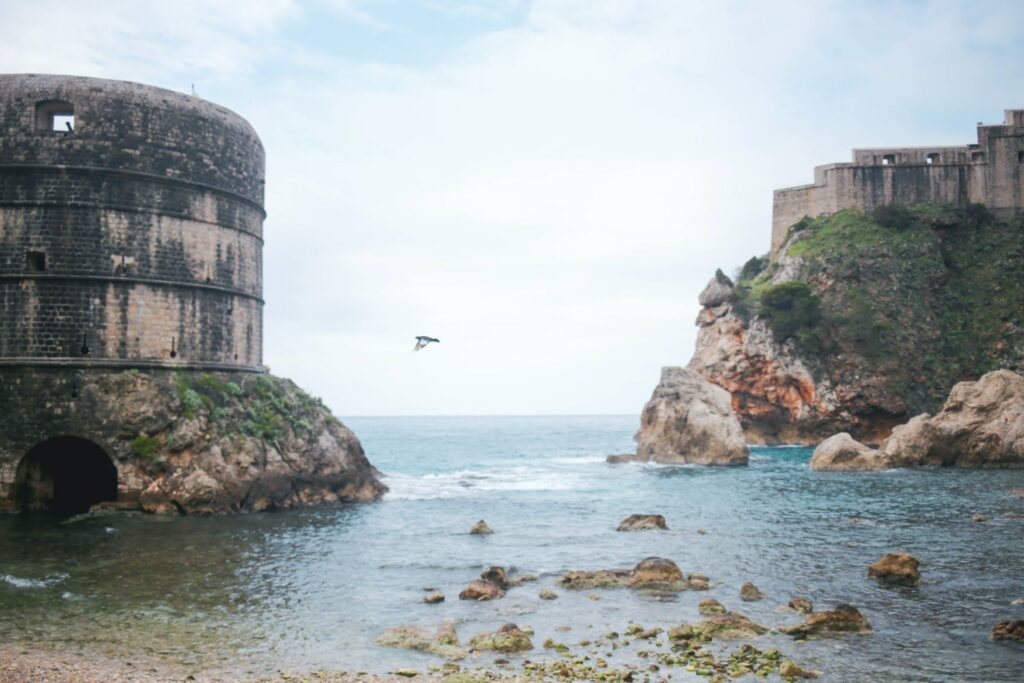

Indeed, the path leads to Fort Royal, whose staircase leads to the highest part of the island, from where an extraordinary panorama opens. The era of the fort dates back to the early 1800s when Napoleon’s troops were rampant. It is currently home to the Croatian Academy of Arts and Sciences, as well as the Museum of Natural Sciences.
The origins, however, go back to more distant times, around the year 1000, when a Benedictine monastery was built, and later transformed into an abbey. Later, in 1500, the property passed to Archduke Maximilian of Habsburg, who turned the former monastery into a luxurious summer residence with a botanical garden, which can still be visited today. At the end of the 19th century, the building was acquired by Rudolf of Habsburg, the son of the famous Princess Sissi, or Elizabeth of Bavaria, who returned the property to the monks but only for a short period.
Numerous legends give the island a special charm: for example, the one according to which Richard the Lionheart took refuge here after returning from the Third Crusade. It also tells about the curse of the Benedictines who were expelled from the abbey. And you get into the Game of Thrones series, Game of Thrones, where the monastery of the ancient monastery appears in the episode of the meeting of Daenerys and the Eternals.
Betina Beach
Here is another decidedly romantic place with a secluded beach in front of a cave, hidden between Villa Seherezada and Gjivovici Beach. Its name comes from the nickname of the scientist Marina Getaldika. You can get here by boat, kayak, or swim to find a shaded place protected by rocks and a high cave vault. It is usually considered a romantic landing place for couples in love because it looks like a context from a fairy tale.
There is also a trail that descends from the cliffs, but it must be overcome with the help of suitable equipment. The water is clear, although the rocky bottom and variable depth require attention. But the scenario is unique and not only in summer. In other seasons, when there are fewer people, the beach looks even more beautiful.
Stradun, Dubrovnik
A wide paved street, shining in the sun and illuminated by moonlight: this is the street that mainly characterizes Dubrovnik. Residents call it Stradun, a Venetian name that comes from the Italian “Strada”, in memory of the rich century that the city spent under the auspices of the Republic of Venice. Placa Street is the main artery, it starts from the entrance to the ancient district in Ploce and goes to the second main entrance to the Pila Gate.

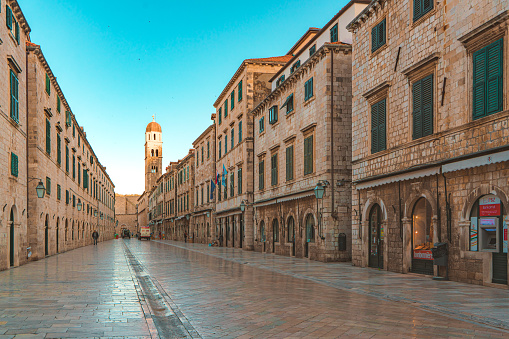
In general, it looks like a huge block of white marble surrounded by Renaissance-style houses. Even though the earthquake of 1667 and the great fire that followed it destroyed or damaged some buildings in antiquity, its beauty remained untouched. On the country roads leading to Stradun, it is easy to find special places. These are small clubs, restaurants, or cafes. Places where you can taste local wine or fine cuisine.
All to immerse yourself in the magical spirit of old Ragusa, where the past meets the present. Along Stradun Street you can admire such wonders as the Onofrio Fountain, whose name comes from the name of the Neapolitan Onofrio Della Cava, who brought water to the city center in the 15th century. Among the Baroque palaces, the Orlando Column stands out as an ancient monument that tells about the exploits of the knight, the savior of the city according to the legend of the eighth century. The inevitable destination leads to the Cathedral of the Assumption of the Blessed Virgin Mary. A walk among many wonders is something exclusive.
Franciscan Monastery
At one of the two ends of Stradun, we find the Franciscan monastery of Brace. This is a historic building that has played a strategic role in the social and cultural life of the city over time. The Franciscan Order has been living here since 1317. Inside there is a rich library, where some manuscripts have survived many destructions, up to the war in the former Yugoslavia. One of the oldest pharmacies in Europe, which has been continuously run by monks for more than seven centuries, is also timeless. There is no shortage of paintings and sculptures throughout the building, decorations that contributed to the inclusion of the monastery on the UNESCO Heritage List.


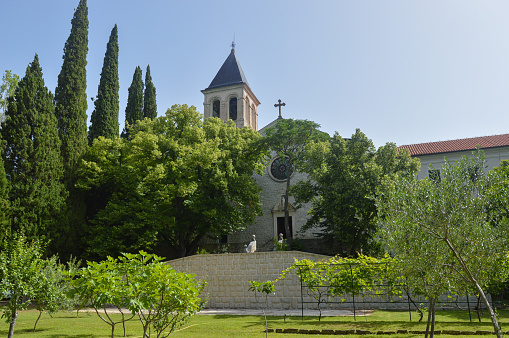
Dominican Monastery
The history of the Dominicans in Ragusa begins in 1225, although the monastery and church were completed only in the 14th century. The whole complex was located inside the city walls, which explained its strict and straightforward appearance. The church is made in the Gothic style, the bell tower is spread over three levels, which correspond to three different periods of inspiration: Romanesque, then Gothic, and Baroque.
The interior of the church is built on one nave with numerous Baroque decorations, among which stands out a crucifix painted on wood and placed above the altar, made by Paolo Veneziano. The museum houses remarkable paintings signed by Ragusa masters between the fifteenth and sixteenth centuries, as well as several medieval illuminated manuscripts, 210 incunabula (the first printed books), jewelry, and art objects.
Sponza Palace
This 16th-century building was originally built for customs, but soon became a Mint with a state treasury and a corresponding bank. Currently, it houses the State Archive with a collection of priceless manuscripts dating back more than a thousand years. A truly beautiful building characterized by a perfect combination of different styles, mainly Gothic and Renaissance.
It seems that he greets visitors with a large portico with six columns, and on the ground floor he opens windows in the late Gothic style with a view of the city. On the second floor, the style of the windows becomes Renaissance, and we find a niche with a statue of San Biagio. Inside, it is also worth visiting the Hall of Memory of the Defenders of Dubrovnik with a touching photo exhibition dedicated to young people who died during the 1991-1995 war.
Church of San Biagio
The Baroque Church of San Biagio is one of the main tourist attractions of the city. It is dedicated to the defender of the Republic of Ragusa, later identified by the Slavs of the medieval period with the pagan god Vales. The structure dates back to 1715 and was built by the Venetian architect Marino Gropelli on the ruins of a Romanesque church, which at that time suffered from earthquakes and fires. The model that inspired him is the Venetian church of Sansovino di San Maurizio. The church has one nave with a plan in the form of an inscribed Greek cross, an apse located in the center of two sacristies, and a dome in the center. A flight of stairs rises in front of the portal, the facade is divided into four parts by the same number of columns in the Corinthian style.
In the upper part, you can see a semicircular tympanum and a balustrade with three statues, also by the Venetian Grappelli. Inside, the barrel vault is decorated with Baroque decorations. The main altar of white and polychrome marble has a gilded niche and a silver statue of the patron saint of San Biagio, the only one who escaped from the terrible fire of 1706. The front part of the dome is finally decorated with images, two angels pull back the curtain in front of the medallion.










